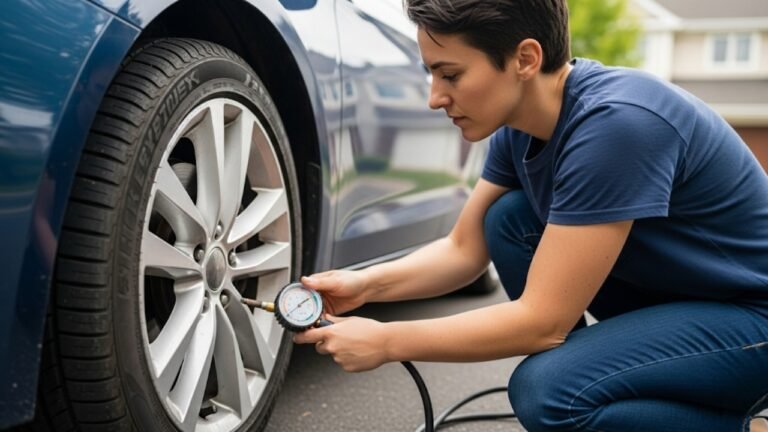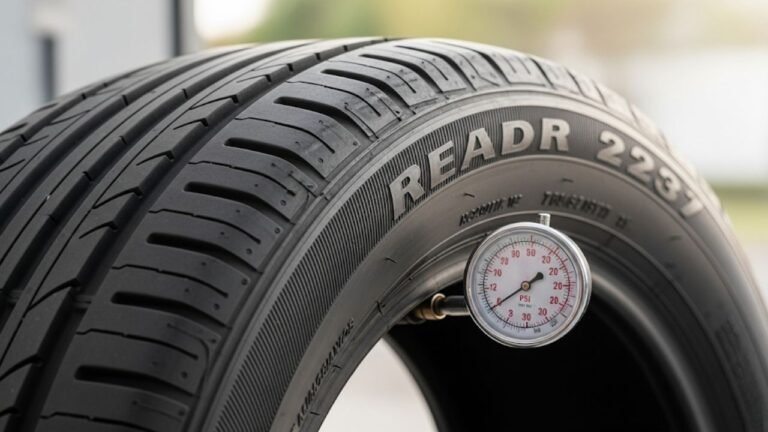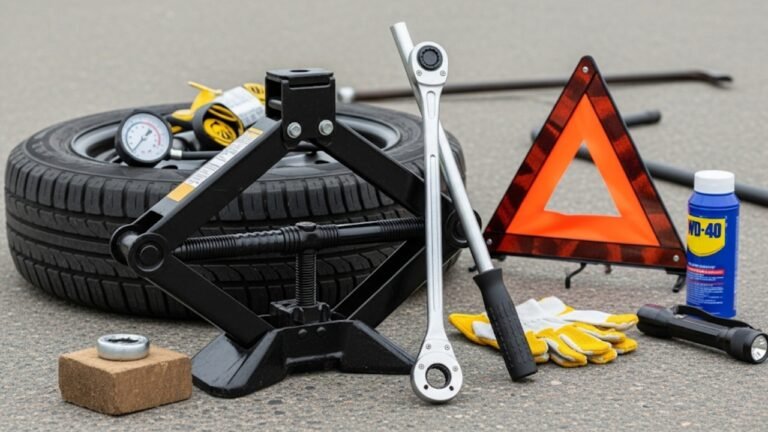Guide to Car Tyre Puncture Repair Kits
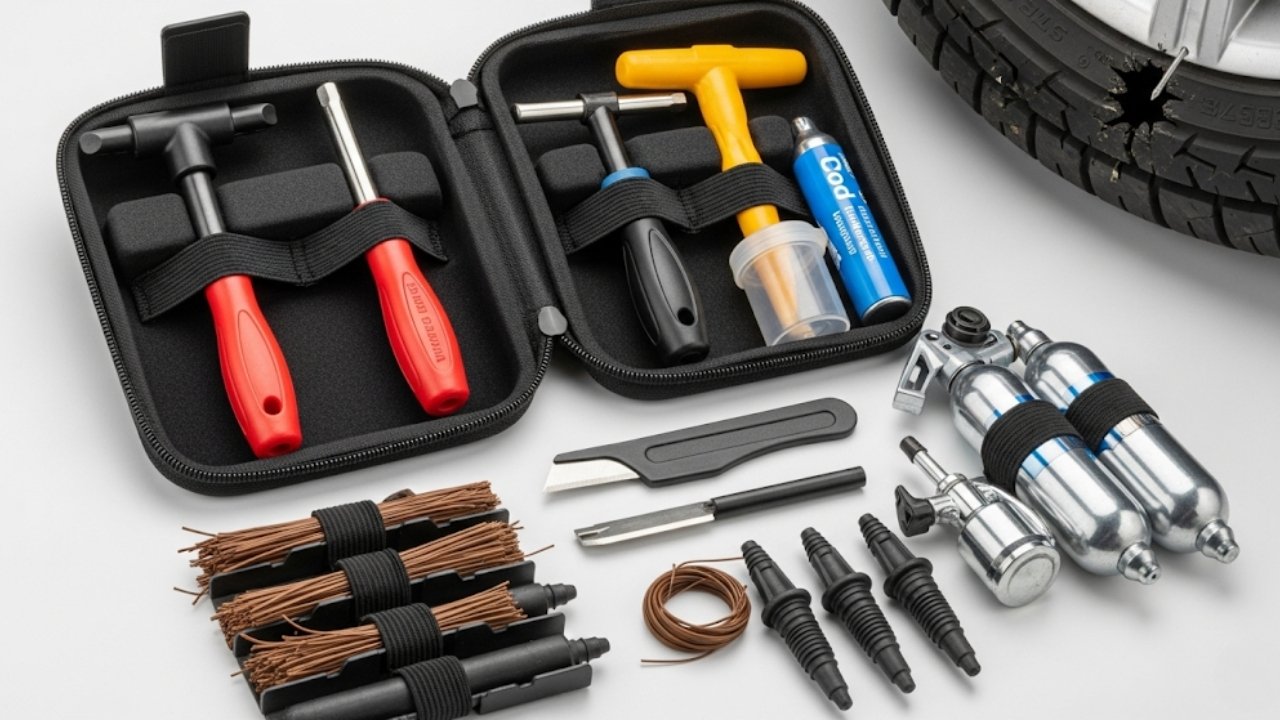
You’re cruising down the highway, wind in your hair, playlist on point, and then—thump-thump-thump. That dreaded sound. You pull over and realize your tyre’s flat. No spare. No help nearby. That’s when a friend of mine handed me something that changed the game—a car tyre puncture repair kit.
At first glance, it looked like a random bunch of tools in a case. But that little box saved the day—and could’ve saved many frustrating hours had I known about it earlier.
This article dives deep into everything you need to know about car tyre puncture repair kits—what they are, why they matter, how they work, and which one’s right for you. I’ll walk you through it like we’re chatting over a cup of tea, maybe with a side of roadside samosas. Let’s get rolling!
What Is a Car Tyre Puncture Repair Kit, Really?
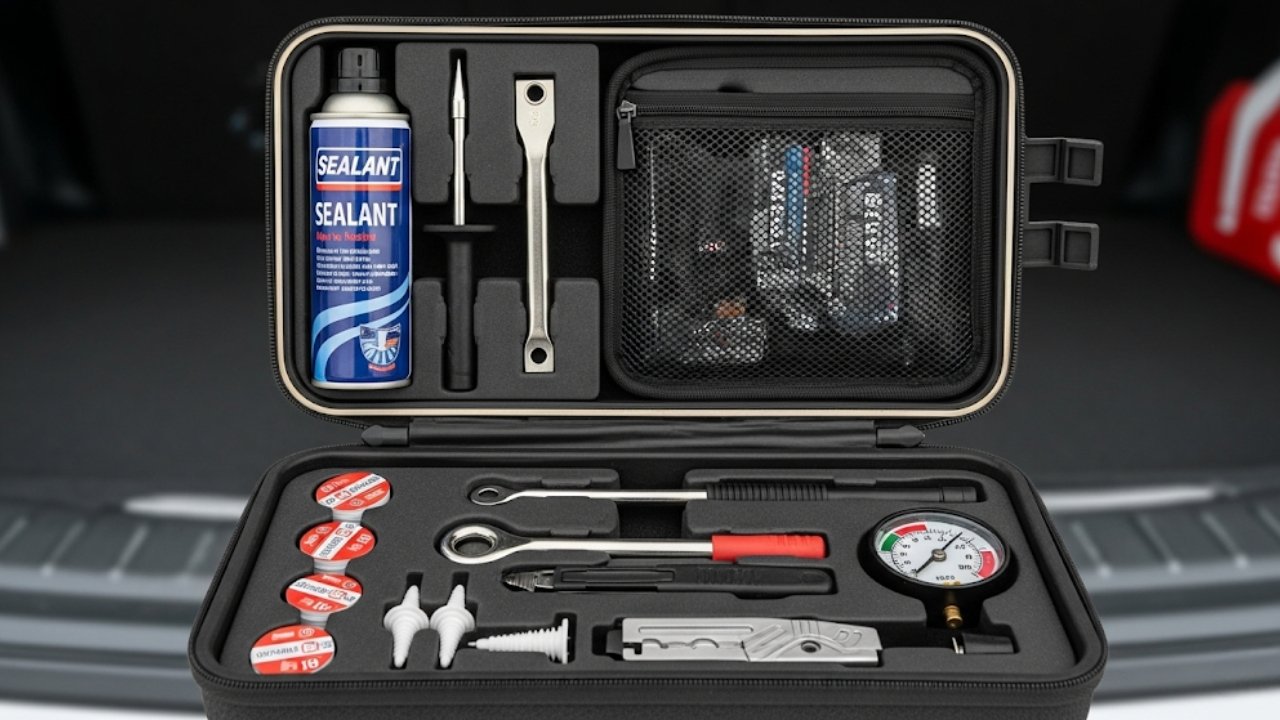
Here’s what’s often inside:
-
A reamer tool: Prepares the puncture hole
-
An insertion tool: Used to plug the hole
-
Rubber plugs or sealant strips
-
Adhesive or rubber cement
-
Some kits include an air compressor or CO2 cartridges
You might think this all sounds technical. But it’s surprisingly intuitive—like patching a bicycle tyre, but with more oomph. The key? You don’t need to be a mechanic. Just a bit of courage and a five-minute YouTube tutorial.
These kits are typically used for tubeless tyres, which most modern vehicles now use. So, if you’re driving something made in the last two decades, chances are this kit could be your best friend.
Why Every Driver Should Carry a Car Tyre Puncture Repair Kit
Let me put it bluntly—this thing is the fire extinguisher of your trunk. You hope you never use it, but when the flames rise (or in this case, the air hisses), it’s your best bet.
Here are real-life reasons why you should always have one:
-
Avoid Tow Trucks: Flat tyres often happen in remote areas or in the middle of the night.
-
Save Money: One tow call can cost more than the entire car tyre puncture repair kit.
-
Fix It Fast: Some punctures take under 10 minutes to seal.
-
No Need to Change the Tyre: If you hate the back-breaking work of loosening nuts, this is a blessing.
-
Empowerment: There’s something incredibly satisfying about fixing your own tyre.
I remember once during a road trip to Sylhet, our car hit a nail on a rocky trail. Remote hills, no cell signal. Thankfully, my friend had a car tyre puncture repair kit, and within 15 minutes, we were back on the road, watching the sun set over tea gardens instead of panicking.
Types of Car Tyre Puncture Repair Kits: Choosing the Right One
Not all repair kits are created equal. Some are minimal, some come with all the bells and whistles. Choosing one depends on your car type, travel habits, and confidence level.
Let’s break it down in a table for clarity:
| Type of Repair Kit | Best For | Includes | Price Range |
|---|---|---|---|
| Basic Plug Kit | Quick fixes on tubeless tyres | Reamer, insertion tool, rubber plugs | $10 – $25 |
| Sealant & Compressor Kit | Modern cars, no spare needed | Sealant canister, 12V compressor | $30 – $60 |
| Heavy-Duty Off-Road Kit | SUVs, Jeeps, rural/off-road driving | Metal tools, larger plugs, pressure gauge | $50 – $100+ |
| CO2 Inflator Kit | Cyclists, bikers, compact cars | CO2 cartridges, plugs, mini tools | $20 – $40 |
Tip: Choose a car tyre puncture repair kit that suits your daily drive. If you’re city-bound, a plug-and-go kit is enough. For long drives or rural adventures, go heavy-duty.
How to Use a Car Tyre Puncture Repair Kit: Step-by-Step with a Personal Twist
Fixing a puncture might seem scary at first—but it’s kind of like making a cup of instant noodles. Messy? Maybe. Complicated? Not really.
Here’s how I do it, every time.
Step 1: Find the Leak
-
Look for the hissing sound
-
Pour some water to spot bubbles
-
Nail or screw stuck? Don’t pull it yet.
Step 2: Remove the Object
Use pliers or anything handy to pull it out.
My first time, I used a metal fork. Desperate times, right?
Step 3: Ream the Hole
Insert the reamer tool in and out. This cleans and opens the hole for the plug.
Step 4: Insert the Plug
-
Thread a rubber strip through the insertion tool
-
Push it halfway into the hole
-
Yank the tool back, leaving the plug inside
Step 5: Seal and Inflate
-
Use an air compressor or CO2 canister
-
Check pressure—usually 32–35 PSI for most cars
-
Done!
It’s messy, a little sweaty, but it works. And once you do it once, the fear fades forever.
When NOT to Use a Car Tyre Puncture Repair Kit
As much as I love these kits, they aren’t magic wands. Sometimes, they’re not enough. Knowing when not to use them is just as important.
Avoid using a kit if:
-
The hole is on the sidewall of the tyre
-
The tyre is ripped or shredded
-
The puncture is bigger than 6mm in diameter
-
You’re dealing with inner-tube tyres
In such cases, the tyre’s integrity is compromised. Driving on it could cause a blowout, which is way more dangerous.
So, the rule? Use car tyre puncture repair kits for small, central treads—not major damage. When in doubt, call for help.
Pros and Cons of Using a Car Tyre Puncture Repair Kit
No solution is perfect. Here’s the truth, straight-up.
Pros
-
Quick and convenient
-
No jack or spare needed
-
Cost-effective
-
Space-saving
Cons
-
Not suitable for all punctures
-
Can be messy
-
May need re-inflation often
-
Might void tyre warranties
Personally, the pros outweigh the cons for me. But knowing both sides lets you use the tool wisely.
Top Car Tyre Puncture Repair Kits You Can Trust
When it comes to car tyre puncture repair kits, brand and build matter. I’ve personally tried a few and heard countless stories from friends, mechanics, and even Uber drivers who swear by certain models. Here’s a breakdown of some top kits you can count on.
1. Slime Smart Spair Emergency Flat Tire Repair Kit
-
Best For: Quick city use
-
Includes: 12V compressor, sealant, hose adapters
-
Why People Love It: It’s clean, easy to use, and doesn’t require you to remove the tyre.
-
Real-Life Feedback: A friend used it on a Dhaka-Chittagong highway trip—saved him from being stranded in the rain.
️ 2. Boulder Tools Heavy Duty Tire Repair Kit
-
Best For: Off-roaders, SUV owners
-
Includes: Reamer, plugs, T-handles, pliers, valve tools—57 pieces total!
-
Why It’s Great: Designed to tackle deep punctures and rugged terrain.
-
Real-Life Feedback: I used this once in the hill tracts of Bandarban—solid, reliable, and worth every penny.
⚙️ 3. Safety Seal Deluxe Kit
-
Best For: Long-term durability
-
Includes: Professional-grade tools, multiple plugs, lubricant
-
Bonus: Designed for repeated use—ideal for commercial vehicles.
4. AirMan ResQ Pro+ Tire Repair Kit
-
Best For: Modern, electric, and luxury cars
-
Includes: Sealant bottle, inflator with digital gauge
-
Why It Stands Out: Sleek design, super quiet, and mess-free
Tip: Invest once in a car tyre puncture repair kit that suits your needs. Don’t go cheap—your safety rides on it.
Caring for Your Repair Kit: Maintenance Tips that Matter
It’s easy to throw your repair kit in the trunk and forget about it—but like any tool, it needs a bit of love.
Here’s how you keep your kit road-ready:
-
Check sealant expiry dates (usually 2–3 years)
-
Clean your tools after every use to prevent rust
-
Keep the compressor charged or test it monthly
-
Restock plugs after each use
-
Store in a dry, cool place—preferably in a case
Think of your car tyre puncture repair kit like a first aid box. It’s there for emergencies, but useless if outdated or empty.
Common Myths About Tyre Repair Kits: Let’s Bust Them
There’s a lot of confusion floating around when it comes to car tyre puncture repair kits. Let’s break it down with a little reality check.
| Myth | Reality |
|---|---|
| Tyre plugs are only temporary | High-quality plugs can last thousands of kilometers |
| Sealants damage tyres | Most modern sealants are non-corrosive and safe |
| You can’t use repair kits in rain | Weather doesn’t affect plug performance if you follow steps correctly |
| Repair kits void tyre warranties | Only if misused or used on unsuitable punctures (like sidewall damage) |
| Electric vehicles can’t use these kits | Many EVs come equipped with their own car tyre puncture repair kit |
We need to treat facts like spare change—don’t just pass them around unless they’re real.
Frequently Asked Questions (FAQs)
❓ What kind of tyres can I fix with a repair kit?
Answer: These kits are designed for tubeless tyres. If your vehicle still uses tube-type tyres (very rare now), you’ll need a different approach. Also, they’re only meant for small punctures in the tread, not sidewalls.
❓ How long does a plug repair last?
Answer: If done correctly, a plug can last as long as the tyre itself. Many drivers go 10,000+ km without issues. Still, it’s wise to check with a mechanic later for a permanent patch if you want peace of mind.
❓ Can I drive right after using sealant?
Answer: Yes, in most cases. In fact, driving a few kilometers after applying sealant helps it spread and seal better. Just keep your speed below 80 km/h until you reach a tyre shop.
❓ Are tyre repair kits safe?
Answer: Absolutely—if you use them correctly. They’re trusted worldwide, even by rental companies, car manufacturers, and emergency services. Just follow the instructions and avoid using them on severe damage.
❓ Can I use it more than once?
Answer: Yes. Most car tyre puncture repair kits come with multiple plugs. Tools like the reamer or inflator are reusable. Just replace used plugs and expired sealant bottles.
❓ What’s better: plug kit or sealant kit?
Answer: Depends on your style. Plug kits are more hands-on and mechanical; sealant kits are cleaner and easier. Plug kits work well for bigger holes. Sealants are faster but not for larger punctures.
❓ How much do these kits usually cost?
Answer: Anywhere from $10 to $100+, depending on features. Even the pricier ones pay for themselves after just one emergency save.
❓ Do I still need a spare tyre?
Answer: Having both is ideal. But if you drive a compact car or EV that doesn’t have space for a spare, then a car tyre puncture repair kit is your best alternative.
Final Thoughts: A Small Box That Makes a Big Difference
If you’ve ever stood helplessly by the roadside, watching cars zoom past while your tyre lies flat—you’ll understand the quiet comfort of having a car tyre puncture repair kit.
It’s more than just a tool. It’s freedom. It’s the ability to get back home safely. It’s knowing you can handle things when no one else is around.
To me, carrying this little kit feels like carrying a bit of self-reliance. It fits in the corner of my trunk but holds the power to save hours of frustration, calls to strangers, and towing costs.
So, next time you’re checking your oil or cleaning your windshield, take a peek in your boot. Is your car tyre puncture repair kit there? Is it complete, ready, reliable?
If not, it’s time.

